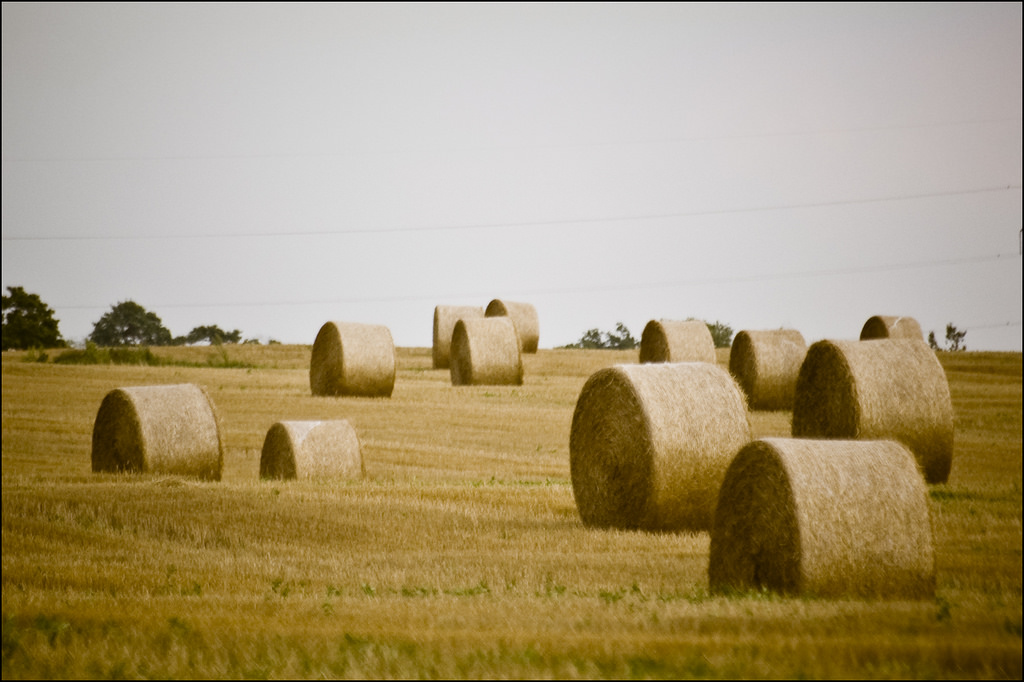In Wilkes-Barre, Pennsylvania, a tornado “carved a swath through the Arena Hub Plaza” in June, a local newspaper wrote. A photo accompanying the article shows a typical tornado scene, a long strip of damage that looks as if a scythe had cut through it.
That scythe indirectly gave us “swath.” A “swath” is “a row of cut grain or grass left by a scythe or mowing machine,” Merriam-Webster says, and by extension, a long strip of something that looks like a scythe had been there.
ICYMI: Eleven newsletters to subscribe to if you work in media
But did you know that “swath” has a fraternal twin, “swathe,” which rhymes with “bathe”? Astute readers might remember that we talked about “swath” and “swathe” in a column on how adding the letter “e” can turn a noun into a verb, and that we noted how both “swath” and “swathe” mean strips of things.
“Swath” and swathe” are so close, in fact, that they share an entry in the Oxford English Dictionary. (Most other dictionaries keep them separate.) Why? Because, the OED says, “Swath” and swathe” are “phonetically ambiguous,” though they sound very different.
Their first appearance was around 888, the OED says, an Old English word for a “track” or “trace,” now considered obsolete. Good thing, too, since the citations are spelled “swæð” and “swæðe,” which would be hard to master today.
Around 1325, the OED says, a “swath/swathe” was “The space covered by a sweep of the mower’s scythe; the width of grass or corn so cut, and the road left behind.” That’s similar to M-W’s first definition. (And see how it related to “track”?)
Nowadays, we mostly see “swath” as the noun and “swathe” as the verb. The verb “swathe,” meaning “To envelop in a swathe or swathes; to wrap up, swaddle, bandage,” traces to the 12th century, the OED says.
“Swath” is frequently accompanied by its close friend “wide,” or one of “wide’s” cousins, “vast,” “broad,” or “large.” “Narrow,” “little,” and “small,” are rarely invited to the “swath” party. Even though a scythe is not that wide, “swath” seems to have grown in scale.
The United States, as is often the case, has come up with its own slang for a “swath.” “To cut a swath” is “to make a pompous display, swagger, ‘cut a dash,’” the OED says, tracing that usage to 1848. But the OED says the phrase is “Now frequently to cut a wide swath.” Americans always like to supersize things.
Another close relative of “swath” is “swatch,” as in an article discussing a hailstorm that “cut across a wide swatch of the region.” (Note that the online headline, though, used “wide swath.” There they go again.)
But most people don’t think of a “swatch” as a row; it’s a patch, as in a “swatch” of fabric, which is Merriam-Webster’s first definition. But look at the fourth definition: “swath,” referring readers to the second definition of “swath,” “a long broad strip or belt.”
The origin of “swatch,” the OED says, was 1527, defined as “The ‘foil’ or ‘counterstock’ of a tally (obsolete); in Yorkshire, a tally ‘affixed to a piece of cloth before it is put with others into the dye-kettle.’” Of course it was.
For a time in the 16th century, a “swatch” was also a row of cut corn or grass, even though we already had “swath.” Of course, we didn’t have good dictionaries then, either. The OED says the etymology of “swatch” is unknown, so it may or may not related to “swath.”
By 1647, a “swatch” had become a sample of cloth, then a sample of anything.
In some local English counties, a “swatch” is “A passage or channel of water lying between sandbanks or between a sandbank and the shore,” the OED says.
Of “swath,” “swathe,” and “swatch,” “swath” is the most common, according to this Google N-gram showing its appearance in books since 1800 or so.
That spike in the use of “swatch” starting around 1980 may be tied to the introduction of “Swatch” watches in the late 1970s. If you repeat that n-gram search with “Swatch” instead of “swatch,” you’ll see that “Swatch” outperformed “swath” for a time in the early part of the 21st century, before sharply falling (though whether there is a connection with the popularity of the watches themselves, we can’t say).
“Swath” is probably also going to be more familiar to audiences. Using “swathe” as a noun is likely to have readers thinking for a second that it’s the verb “swathe,” meaning to wrap in “swaths” of bandages. It’s also likely to “cut a wide swath” in the slang sense, appearing pompous, and could mow down a “swath” of your readers.
ICYMI: A big day for The Denver Post newsroom staff
Merrill Perlman managed copy desks across the newsroom at the New York Times, where she worked for twenty-five years. Follow her on Twitter at @meperl.

